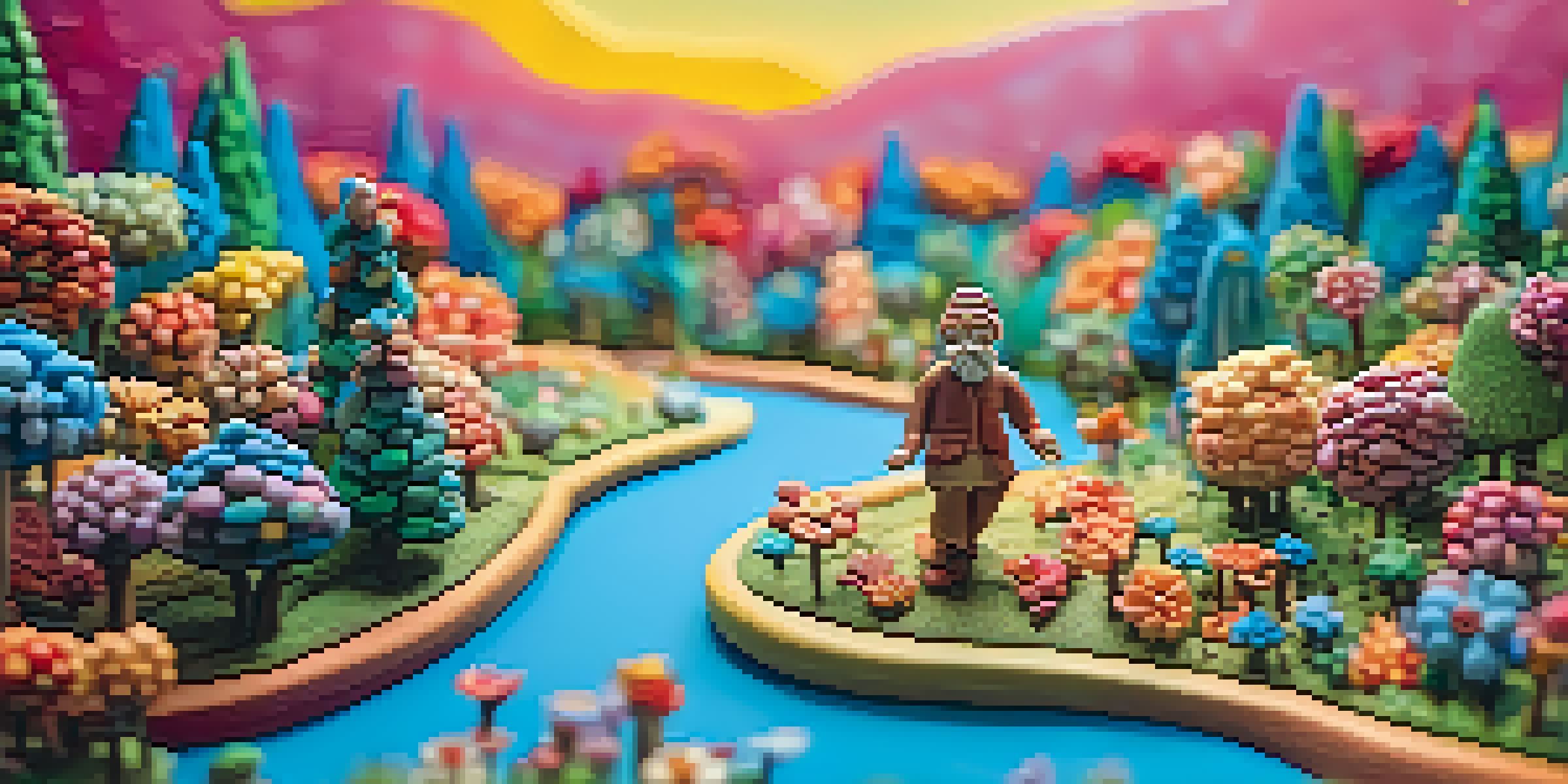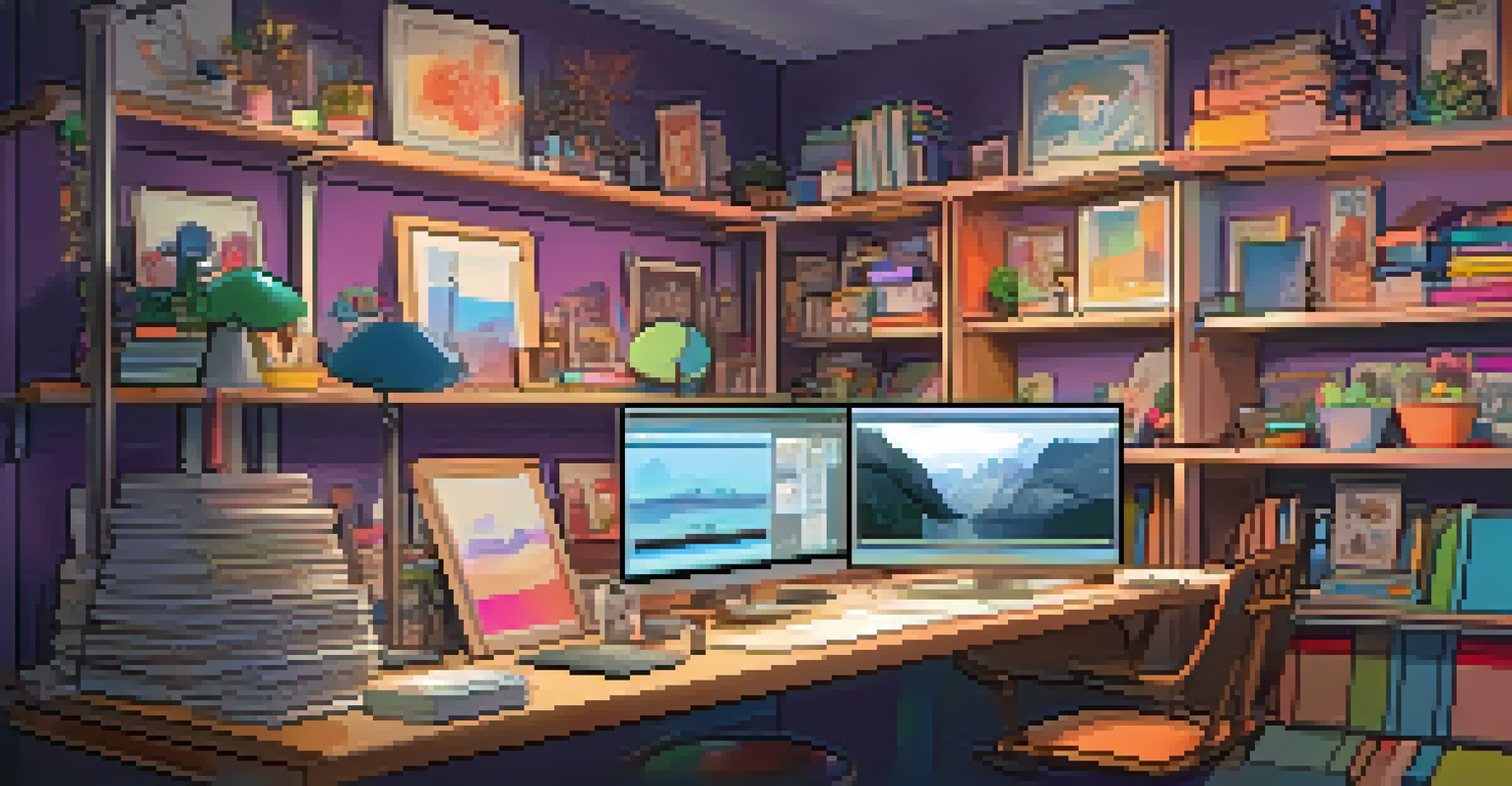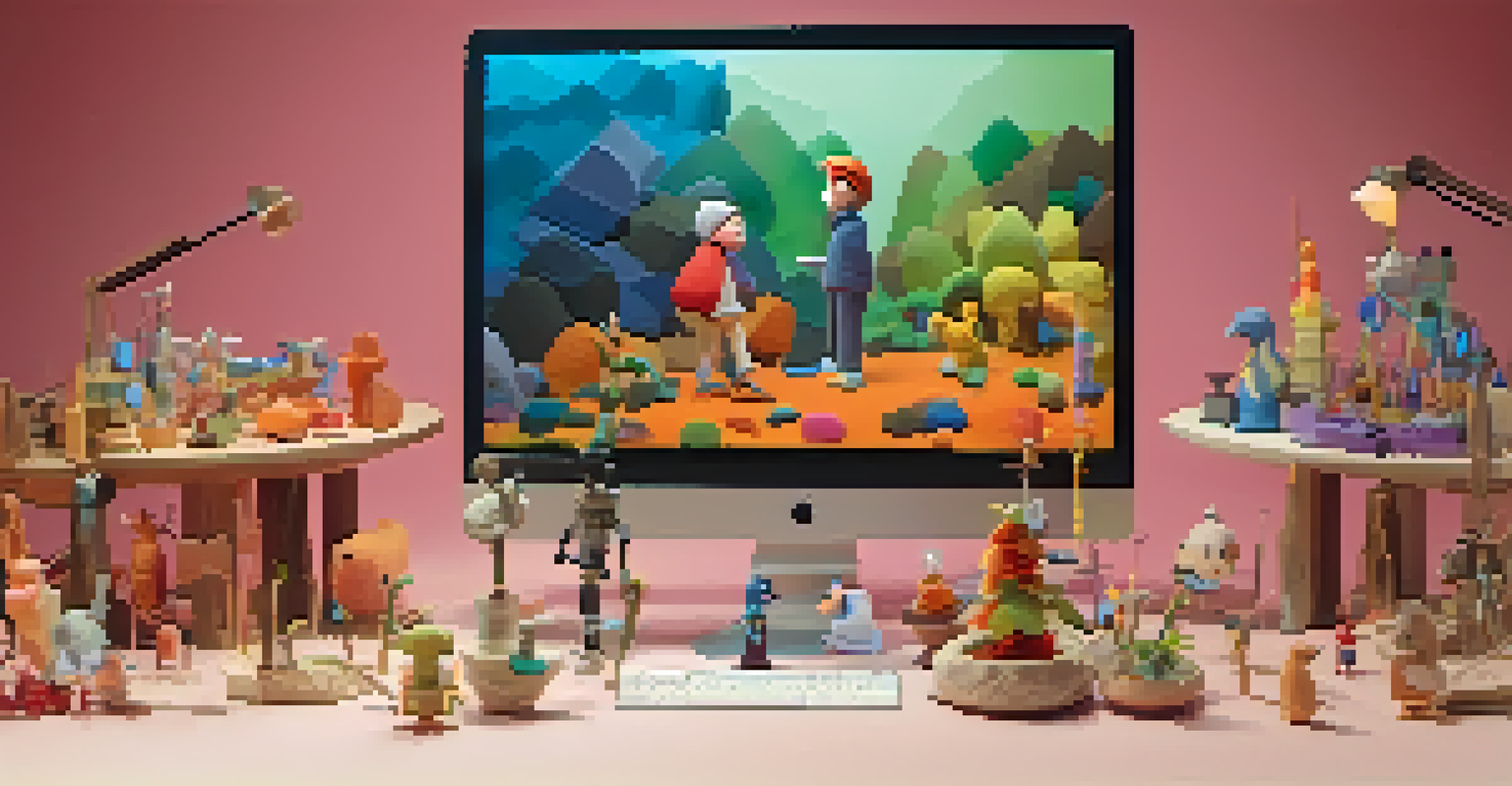Animation Techniques: Stop Motion vs. 2D Animation

Understanding the Basics of Stop Motion Animation
Stop motion animation is a unique technique that brings inanimate objects to life. By taking a series of photographs of a subject, moving it slightly between each shot, and playing them in sequence, animators create the illusion of movement. This method can involve anything from clay figures to everyday objects, making it incredibly versatile and creative.
Animation can explain whatever the mind of man can conceive.
One of the charming aspects of stop motion is its tactile quality. Unlike digital animation, it often has a handcrafted feel that resonates with audiences. Think of beloved films like 'The Nightmare Before Christmas'—the painstaking effort put into each frame gives it a unique character that digital techniques sometimes lack.
However, creating stop motion can be time-consuming and labor-intensive. Each frame requires careful adjustments and meticulous attention to detail. But for those who thrive on the artistic process, the results can be deeply rewarding, offering a tangible connection between the animator and their work.
An Overview of 2D Animation Techniques
2D animation involves creating movement in a two-dimensional space, often using digital tools. This technique can range from traditional hand-drawn animations to modern computer-generated imagery. It's like painting a picture that comes to life, allowing for fluidity and creativity in storytelling.

The beauty of 2D animation lies in its versatility. With software like Adobe Animate or Toon Boom, animators can create anything from whimsical cartoons to complex narratives. This flexibility often leads to a wide range of visual styles, making it a popular choice for both indie projects and big-budget films.
Stop Motion's Unique Charm
Stop motion animation offers a tactile, handcrafted quality that resonates with audiences and enhances storytelling.
Despite its advantages, 2D animation can also pose challenges. Achieving smooth motion requires a deep understanding of principles like timing and spacing. However, with practice, animators can master these techniques, resulting in captivating animations that engage and entertain audiences.
The Creative Process: Stop Motion vs. 2D Animation
When it comes to creativity, both stop motion and 2D animation offer unique advantages. In stop motion, the animator has to physically manipulate objects, which can lead to unexpected discoveries and serendipitous moments. This hands-on approach often sparks creativity in ways that digital tools might not, allowing for a more organic storytelling process.
The best animation comes from the heart, not from a computer.
On the other hand, 2D animation offers an expansive digital canvas. Animators can create elaborate worlds and characters with ease, using layers and effects that are often difficult to replicate in stop motion. This means that while 2D may require a different kind of creativity, it can result in stunning visuals that transport viewers to new realms.
Ultimately, both techniques present opportunities for artistic expression. Whether it's the tactile charm of stop motion or the vibrant possibilities of 2D animation, the creative process in each method has its own set of rewards and challenges, allowing animators to choose their preferred path.
The Art of Storytelling in Animation
Storytelling is at the heart of animation, regardless of the technique used. Stop motion can evoke a sense of nostalgia and whimsy, often enhancing narratives about childhood or imaginative adventures. The deliberate pacing and handcrafted quality can draw viewers in, making them feel a part of the story.
In contrast, 2D animation often allows for faster pacing and dynamic storytelling. The ability to create fluid movements and vibrant characters makes it ideal for action-packed scenes or humorous moments. This versatility means that animators can craft narratives that resonate with a wide audience, from children to adults.
2D Animation's Versatility
2D animation allows for fluid movements and diverse visual styles, making it suitable for a wide range of narratives.
Both methods can effectively convey emotions and messages, but they do so in different ways. The choice of technique can shape the tone and feel of a story, influencing how audiences connect with the characters and plot. Ultimately, it's the animator's vision that brings these stories to life, regardless of the medium.
Popular Examples of Stop Motion Animation
Stop motion has produced some of the most memorable animated films in history. Classics like 'Wallace & Gromit' and 'Coraline' showcase the charm and creativity that this technique can bring. Each film is a labor of love, demonstrating the dedication of animators who spend countless hours perfecting every frame.
These films often use a mix of humor and heart, appealing to audiences of all ages. The quirky character designs and imaginative settings draw viewers into a world where anything is possible. For many, these stop motion films are not just entertainment but cherished memories that stand the test of time.
Moreover, stop motion has influenced many artists across different mediums. Its distinct style has inspired everything from commercials to music videos, proving that the technique is alive and well in various forms of media. This enduring popularity highlights the power of stop motion to captivate and inspire.
Noteworthy 2D Animation Films and Series
2D animation has a rich history, with iconic films and series that continue to shape the industry. Classics like Disney's 'The Lion King' and more contemporary works like 'Spider-Man: Into the Spider-Verse' showcase the evolution of this technique. These stories resonate deeply, combining artistry and storytelling in unforgettable ways.
In addition to films, 2D animation enjoys a thriving presence in television. Series like 'Adventure Time' and 'Rick and Morty' have garnered dedicated fanbases, thanks to their unique visual styles and compelling narratives. The flexibility of 2D allows for a diverse range of genres, from comedy to drama, making it a staple in modern animation.
Choosing the Right Technique
Selecting between stop motion and 2D animation depends on the story's needs, budget, and desired aesthetic.
The impact of 2D animation extends beyond entertainment; it often serves as a cultural touchstone. The characters and stories within these works can reflect societal values and issues, sparking conversations and inspiring change. This ability to resonate on a deeper level is what makes 2D animation a powerful medium in storytelling.
Choosing the Right Animation Technique for Your Project
When deciding between stop motion and 2D animation for a project, consider the story you want to tell. Stop motion might be ideal for narratives that benefit from a handcrafted aesthetic, while 2D animation could be better suited for fast-paced or humorous tales. Understanding your project's needs can help guide your choice.
Budget and time constraints also play a crucial role in this decision. Stop motion can be more resource-intensive, requiring a significant investment in materials and time. Conversely, 2D animation may allow for quicker production through digital tools, making it a preferred option for projects with tighter timelines.

Ultimately, both techniques offer unique opportunities for creativity and storytelling. Whether you lean towards the tactile charm of stop motion or the vibrant possibilities of 2D animation, choosing the right method can significantly enhance your project's impact. Embrace the journey of animation, and let your creativity shine.